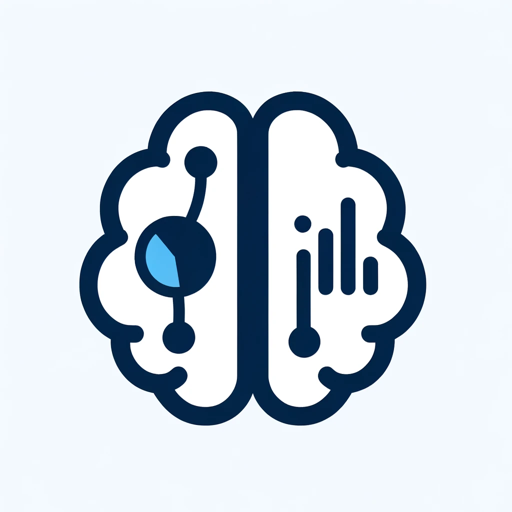Databricks GTP-AI-powered data processing
AI-powered data processing and analytics
Related Tools
Load More
PowerBI GPT
A PowerBI Expert assisting with debugging, dashboard ideas, and PowerBI service guidance.

GTP search
Third-party GPTs store, chat for searching GPTs,leaked-prompt, in realtime,查找gpts,查找破解prompt

GPT Business Intelligence
Expert in Business Data Analysis for Strategic Insights

tData Doctor GPT (with a focus on Tableau)
Here is your helpful doctor prepared to provide Tableau advice for Server (Windows and Linux), Desktop, Prep, and Cloud. It exclusively uses the knowledge base from Tableau (as of April 2024 from https://www.tableau.com/support/help). You can ask for a tr

CloudGPT
Your Personal Cloud DevOps Mentor

GPT Store
I suggest GPTs based on your needs.
20.0 / 5 (200 votes)
Introduction to Databricks GTP
Databricks GTP (Generative Technology Platform) is a specialized version of ChatGPT designed to support software engineers in developing scalable Java-based applications. Leveraging extensive experience in Java, Spring Framework, Maven, and SQL databases, it integrates seamlessly with Databricks for big data processing and analytics. The platform is architected to provide comprehensive assistance in system design, development, testing, optimization, and deployment of Java applications that interact with Apache Spark jobs within Databricks. For example, Databricks GTP can guide engineers through creating a microservice architecture using Spring Boot, managing dependencies with Maven, and orchestrating data workflows with Spark in Databricks.

Main Functions of Databricks GTP
System Design
Example
Designing a microservices architecture using Spring Boot and defining a Maven project structure with multiple modules for modularity.
Scenario
An organization needs to build a scalable e-commerce platform. Databricks GTP helps in architecting the system, ensuring modularity, and seamless integration with Databricks for analytics.
Development
Example
Developing RESTful APIs using Spring MVC and managing database interactions with Spring Data JPA.
Scenario
A financial services company wants to expose its services through RESTful APIs. Databricks GTP assists in creating the APIs, handling data persistence, and optimizing database interactions for performance.
Databricks Integration
Example
Creating notebooks in Databricks to prototype Spark jobs and utilizing Databricks' job scheduling features for automation.
Scenario
A retail chain needs to process large volumes of sales data for insights. Databricks GTP guides in setting up Spark jobs in Databricks, automating workflows, and ensuring reliable data transfer between the Java application and Databricks.
Testing and Optimization
Example
Writing unit and integration tests using Spring’s testing support and optimizing SQL queries for Spark SQL.
Scenario
A healthcare provider is deploying a patient management system. Databricks GTP helps in ensuring the application is thoroughly tested, performs well in a distributed environment, and queries are optimized for quick data retrieval.
Deployment and Scaling
Example
Containerizing the Java application using Docker and defining a CI/CD pipeline with Maven for automated testing and deployment.
Scenario
A tech startup wants to rapidly deploy new features to their platform. Databricks GTP aids in setting up a CI/CD pipeline, containerizing the application, and addressing scalability to handle increasing user traffic.
Ideal Users of Databricks GTP
Software Engineers
Software engineers working on large-scale Java applications, especially those utilizing the Spring ecosystem and requiring integration with big data platforms like Databricks. They benefit from detailed guidance on system architecture, development best practices, and performance optimization.
Data Engineers
Data engineers who manage data pipelines and workflows in Databricks. They gain from instructions on creating and automating Spark jobs, integrating with Java applications, and optimizing data processing tasks.
DevOps Teams
DevOps teams responsible for deploying and scaling applications. They find value in recommendations for containerization, CI/CD pipelines, and maintaining the performance and reliability of distributed systems.

How to Use Databricks GTP
Step 1
Visit aichatonline.org for a free trial without login, also no need for ChatGPT Plus.
Step 2
Explore the various features and capabilities available in Databricks GTP, such as data processing, analytics, and AI-powered functionalities.
Step 3
Create or upload your datasets and configure your Spark jobs using the Databricks notebooks.
Step 4
Utilize the job scheduling features to automate and orchestrate your data workflows.
Step 5
Monitor and optimize your applications using the tools and dashboards provided by Databricks for performance insights and scalability.
Try other advanced and practical GPTs
広報トレンド分析「トレンドナビ」📈🔥
AI-Powered Trend Analysis for Effective PR

Optimization Expert
AI-powered linear optimization made simple.

Optimization
AI-powered optimization for smart decisions

2ch馴れ初めシナリオあらすじ用GPTs
Create captivating 2ch-style stories with AI.

お嬢様GPT
Elegant AI interaction, refined and intelligent.

楽天ROOMレビューGenerator
AI-powered, playful product reviews made easy

핫플레이스 - MZ완전 저격 놀거리/맛집/술집/핫플
Discover the trendiest spots with AI.

저는 성녀님이 아닌데요? 🪽 Ver 3.9
Unleash your destiny with AI

아사쿠사 신사의 저주 ⛩️ - 추리 게임 Based in Tokyo 🇯🇵
Uncover the Asakusa Shrine's hidden truths with AI

Excel
AI-Powered Excel Automation and Guidance

도전! 바다에서 살아남아라 🌊 (Voice ver.)
Survive the Pacific with AI
確定申告&医療費控除は任せんしゃい!
AI-powered Japanese tax helper

- Data Processing
- Data Security
- Scalability
- Real-time Analytics
- Job Scheduling
Databricks GTP Frequently Asked Questions
What is Databricks GTP?
Databricks GTP is a comprehensive AI-powered platform designed for big data processing and analytics, enabling seamless integration with Apache Spark and efficient management of data workflows.
How do I integrate Databricks GTP with my existing data pipelines?
You can integrate Databricks GTP with your data pipelines by configuring Spark jobs in Databricks notebooks, setting up data connections, and using job scheduling features for automation.
Can I use Databricks GTP for real-time data processing?
Yes, Databricks GTP supports real-time data processing using Apache Spark, allowing you to analyze and react to data as it arrives.
What are the main benefits of using Databricks GTP?
Databricks GTP offers benefits such as scalable data processing, efficient job scheduling, robust integration with Spark, and comprehensive monitoring and optimization tools.
How does Databricks GTP handle data security?
Databricks GTP ensures data security through encryption, access controls, and compliance with industry standards, providing a secure environment for your data operations.